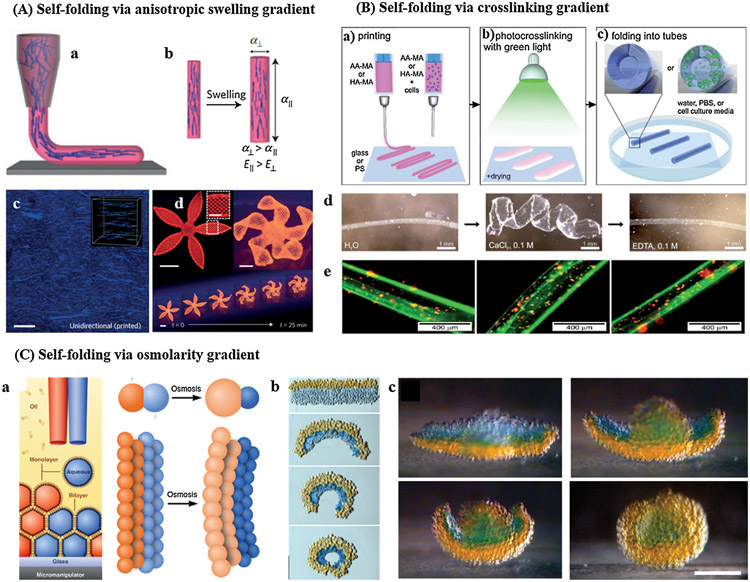Fig. 17.
4D bioprinting of shape-morphing structures capable of self-transformation with intrinsic stimuli. (A) Biomimetic 4D printing of self-folding objects via anisotropic swelling: (a) 4D printing induce shear-induced alignment of cellulose microfibers; (b) anisotropic swelling in the longitudinal direction; (c) Blue staining of aligned printed fibers; (d) anisotropic swelling trigger folding of the printed pattern into the flower-shaped structure. (B) 4D biofabrication of Ca2+ responsive cell-laden hollow tubes: (a) printing of AA-MA or HA-MA in presence/absence of cells; (b) crosslinking of the printed films via irradiation with visible light; (c) spontaneous folding into tubular structures in aqueous solution; (d) reversible unfolding (middle image)/folding (right image) in using Ca2+ and EDTA, respectively; (e) live/dead assay of cells encapsulated into self-folded tubes after 1 (left image), 2 (middle image), and 7 (right image) days of culture. (C) Self-folding via osmolarity gradient: (a) printing of droplet network using lipid-coated aqueous droplets of different osmolarities to trigger bending via swelling/shrinking; (b) and (c) self-folding of the printed strip and slower-shaped bilayers driven by different osmolarities, respectively. A: [367], Copyright 2016. Reproduced with permission from Nature publishing group. B: [368], Copyright 2017. Reproduced with permission from John Wiley and Sons Inc. C: [369], Copyright 2013. Reproduced with permission from the American Association for the Advancement of Science.

